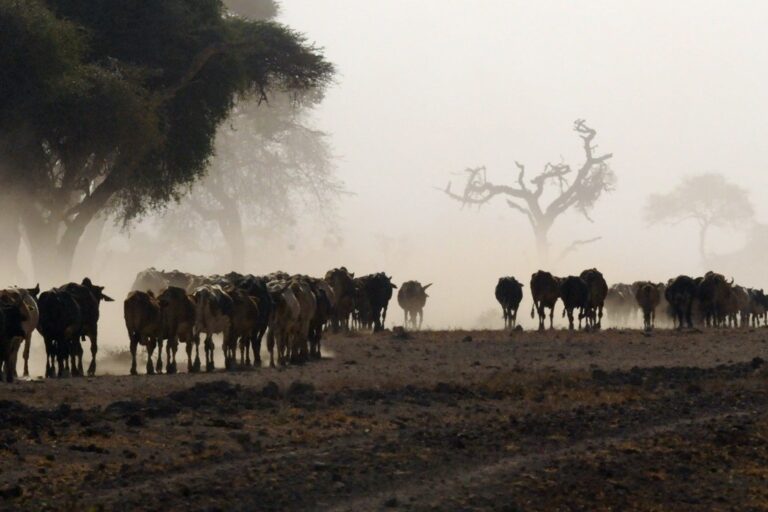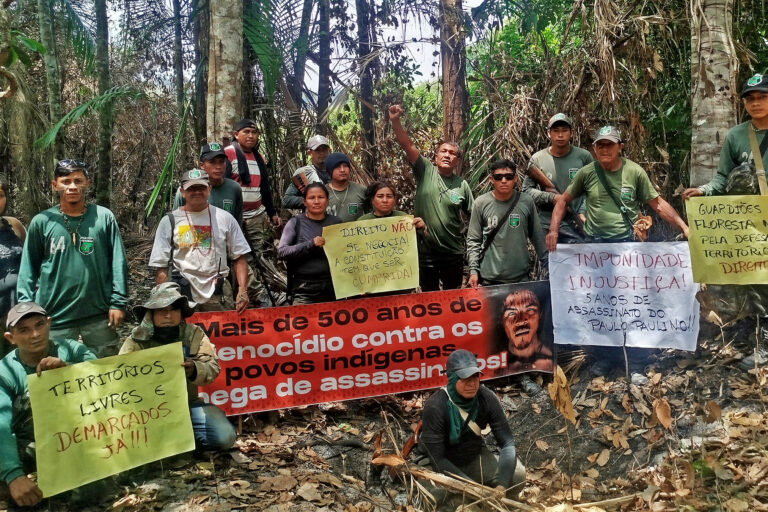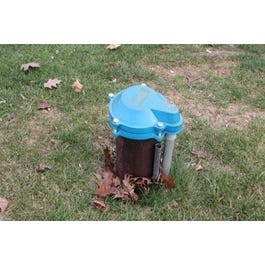
[ad_1]
- Conventional conservation wisdom has held that cattle herds managed by Indigenous Maasai in East Africa compete with wildlife for grazing land and degrade protected areas like Kenya’s Maasai Mara and Tanzania’s Ngorongoro.
- But a new research study shows that, in a small study patch of the Maasai Mara, cattle herds didn’t cause a decline in forage quantity or quality, nor did wildlife steer away from areas where cattle had grazed.
- The finding has drawn criticism from other researchers, who question its methodology and say the overwhelming evidence points to the need for restrictions on cattle grazing inside these protected areas.
- The study authors say they hope their findings spark new thinking about how pastoralists like the Maasai can be seen as potential conservation partners rather than excluded as they’ve been for decades.
Cattle and conservation don’t typically mix. For centuries, East African pastoralists like the Maasai trudged across the region’s savannas with their herds, passing by elephants and lions in their search for life-giving grasses. But times have changed. Today, landscapes that were once a no-man’s-land are a bordered maze of ranches, farms and national parks. Cattle are especially unwelcome in the latter.
Letting livestock graze freely inside areas set aside for wildlife, the argument goes, can bring them to ruin. Grasses that a wildebeest or buffalo might eat are instead consumed by cattle, turning green areas barren and forcing the non-domestic animals into smaller pockets. It’s an argument with a lot of traction, undergirding policies in conservation areas across East Africa that amount to “no cattle allowed.” And there’s research to back it up.
But a group of scientists say data they gathered over 19 months in Kenya’s Maasai Mara National Reserve (MMNR) tells a different story. Their study, published in September, is causing a stir in the world of ecologists who work in the Maasai Mara — and among tourism operators there.
The Maasai are barred from bringing their herds into the MMNR, and if they’re caught they face stiff penalties. Still, some do it anyway, especially when there are droughts or during the annual dry season. The new study’s findings say that when they do, the reserve’s wildlife don’t much seem to mind.
“Given the data that we had — at the current livestock density and the range of environmental variables that we looked at — we found that there was a really negligible effect that cattle had on other wildlife and the environment,” said study co-author Bilal Butt, an associate professor at the University of Michigan, U.S.
This may seem like a niche disagreement over herbivore competition in Kenya, but it could have far-reaching implications for the Maasai and other pastoralists. Just south of the Mara, in Tanzania’s Ngorongoro Conservation Area, a battle over land rights and forced evictions has been unfolding for years. Maasai herders there, officials say, are a threat to Ngorongoro’s wildlife (and the revenue-generating safaris that orbit it).
Butt says the study backs up what Maasai have been saying for decades: pastoralism, one of the world’s longest-running ways of life, doesn’t have to be at odds with conservation.
“This paper, in a way, provides a positivist, scientific, quantitative framework onto a long-standing environmental justice issue,” he said.
Other ecologists aren’t so sure.

Making the Mara
The Maasai Mara National Reserve is a 151,000-hectare (373,000-acre) protected area in southern Kenya, best known for its yearly “Great Migration,” when more than a million wildebeest cross over from Tanzania’s Serengeti, which lies just south of the reserve. First established by the British colonial government in 1948, the reserve was formally recognized by Kenya in 1976. Hundreds of Maasai pastoralist families were relocated to make way for the reserve, and livestock grazing inside it was all but outlawed.
Combined with the community-owned wildlife conservancies that complement and border the reserve, the Maasai Mara ecosystem covers nearly 300,000 hectares (741,000 acres). More than 300,000 tourists flock to it every year, hoping to spot the “Big Five” — lion, elephant, rhino, leopard and African buffalo — as well as cheetah, giraffe, zebra and numerous others.
Between July and December 2023, the reserve generated more than $20 million in entrance fees alone.
Sandwiched between the MMNR and the conservancies is a small land carve-out called Talek, home to a few thousand Maasai. Most aren’t landowners in the nearby conservancies, so they don’t get rental fees from the tourist operators who run them. They typically earn their living the same way their grandparents did: from herds of cattle, sheep and goats.

But there’s not always enough grass to go around in cramped Talek, which is also dealing with a complicated fencing crisis. Under the cover of night, when rangers are less likely to spot them, some Maasai still sneak into the reserve with their herds.
“In Talek there’s nowhere else you can graze apart from the reserve. Now everywhere has been fenced, and maybe the conservancies are closed, so you have nowhere to graze. The only option you have is to enter the reserve,” said Calvin Naurori, head of the Talek Mara Youth Association.
Rule-breaking cows were the focus of Butt and his colleagues’ study. They wanted to know if the cattle coming into the border zones were chasing away other herbivores and wildlife. So they rolled up their sleeves and went dung hunting.
Baobabs and backlash
Over the course of 19 months in 2018 and 2019, the scientists visited 60 sites along five paths that ran from the Talek-MMNR border to around 12 kilometers (7 miles) into the reserve. Once a month they returned to each site, taking dung samples and measuring the height, nutritional quality, and type of vegetation they found.
“We measured vegetation biomass, the amount of vegetation, and also the quality of vegetation, including the protein content and fiber, sugar, everything you can think of as a quality of forage,” said co-author Wenjing Xu, a postdoctoral researcher at the Senckenberg Biodiversity and Climate Research Centre in Germany. “We also measured the soil condition, its texture and quality. It was everything we could measure in one spot and we measured it every month.”
When they analyzed the dung samples, the researchers found that at their current, low numbers, Maasai cattle herds weren’t causing a decline in forage quantity or quality inside the Mara reserve. Nor was there evidence of them pushing wild species away. In fact, their data showed that herbivores like gazelle, zebra and wildebeest weren’t even avoiding the parts of the reserve that were close to the Talek border, where cattle were relatively common.
“None of the wildlife showed a direct negative association with cattle,” Xu said. “The only one might be buffalo, which had a very weak negative relationship.”
The study’s findings contradict other research that ties pastoralism and other human activities at the edge of the Serengeti-Mara ecosystem to wildlife displacement. And its authors are quick to warn that they aren’t making a “sweeping statement” about allowing cattle in the reserve. The number of cattle that enter the MMNR is still relatively low; when they visited the sample sites, they found evidence cows had been there only 6% of the time, as opposed to 70% for wildebeest.
Still, the findings are a challenge to the conventional wisdom about the Mara and other landscapes like it in East Africa.

“What we can say is that, at least in this area that we investigated, it’s not as one-sided as how people always talked about it,” Xu said.
Other ecologists who’ve worked in the Maasai Mara landscape are shaking their head at the findings and pushing back. In an interview with Mongabay, Robert Buitenwerf, an assistant professor of biology at Denmark’s Aarhus University, said he was “super critical of the message they present.” He’s now working with a group of colleagues on a formal rebuttal of the study’s findings.
“The area over which the study was done is actually really small,” he said. “If you add up all the surveyed ground, where they count dung of wildlife and livestock, it adds up to about 3 hectares [7 acres] of land that’s been surveyed over those 19 months.”
The relationship between cattle and other wild herbivores is complex, Buitenwerf said. Some species are happy to share space with cattle; they either eat different grasses, or benefit from the more nutrient-rich forage that regrows after the cows have their fill and move on. But other species aren’t so fond of them.
“What we find is that the biggest species, especially elephants and buffalo, don’t so much need high-quality food, they just need lots of it. They seek out parts of the conservancies where cattle are not allowed to go,” he said.
Over a video call, Buitenwerf pointed to satellite imagery that showed overgrazed parts of Talek where grasses were visibly less plentiful than in the neighboring Mara reserve — evidence, he said, that it could be dangerous to argue that restrictions on cattle aren’t necessary.
“There’s a risk that people in places that make decisions, policymakers, might start thinking this might be a good idea after all. And I think there’s quite a big risk for these wildlife populations and the ecosystem as a whole,” he said.

But Xu said the concentrated geographical sampling area wasn’t an accident — in fact, it’s one of the study’s strengths. Whereas many wildlife population surveys in the Maasai Mara are conducted over a very large area with airborne vehicles, they wanted to home in on a tighter space where more detailed samples could be gathered.
“We wanted to do something different,” she said. “And focus on a smallish area, but have a more intensive sampling scheme at a more detailed, refined temporal scale and see whether we could come to different or similar conclusions.”
That the study’s findings are stirring up debate over cattle and the Maasai Mara, Xu said, is part of why they should be taken seriously.
“When there’s actually one single-sided conclusion and narrative, we should always be questioning — is there any bias, and is this just set in stone as what we believe ecologically?”
Where the buffalo (and cattle) roam
Most of the Maasai Mara’s wildlife isn’t actually to be found in the MMNR; it’s to the reserve’s north, in the community conservancies. Those conservancies might represent some of the best evidence that Butt and Xu’s study is on to something.
According to a survey carried out by WWF, an astounding 84% of the ecosystem’s animals are in those conservancies. But cattle aren’t strictly barred from being there. Because they technically own the land, some pastoralists are allowed to graze their herds inside them, provided they follow a rotational plan.
“We allow cattle to graze at certain times of year, depending on the health of the grass or availability of the grass,” said Alistair Nicklin, manager of the 20,200-hectare (50,000-acre) Nabiosho Conservancy, which borders Talek to its north.
The Mara’s conservancies are newer than the MMNR, evolving from “group ranches” about 15 years ago. Partly in compensation for their historical dispossession, the Kenyan government granted some Maasai small plots of land. Tourism operators later convinced them to pool those titles together into the conservancies, which now host luxury safaris. They’ve become a huge draw, geared towards high-paying visitors who don’t want to compete with other tourists in the overcrowded reserve.

As part of the rental agreement they signed to establish the conservancies, some allow the Maasai landowners to graze their cattle — so long as they follow direction from managers like Nicklin.
In a phone interview with Mongabay, he said that last year when he ran a head count in Nabiosho, there were just over 16,000 cattle. A herd that size can cause wear and tear on the ecosystem, but when he sees signs of overgrazing, he tells the pastoralists to move elsewhere. That way, Nicklin said, the conservancy stays healthy and accommodating for wildlife, along with the tourists who come to see it. The key is to set up a plan for when and where they go.
“This year we’ve had good rain, we’re OK,” Nicklin said. “But we’ve already seen pressure in the more consistent grazing zones, where they’ve depleted their resources, and so they’re asking me to open other areas of the conservancy, and that’s where you just have to say, ‘No, it’s not possible.’”
Even scientists who aren’t convinced by the study’s findings admit that in these conservancies, the presence of cattle isn’t just tolerable for some wildlife — it’s good for them.
“The rotational grazing scheme is really key to supporting the coexistence of cattle and wild herbivores in the Mara because it creates these diverse forage options for them,” said Ask Lykke Herrik, one of Buitenwerf’s former students and co-author of a study on cattle grazing inside the conservancies. “But it’s also then crucial to ensure that there are areas that are not being grazed and are cattle-free zones, because some of the species, such as buffalo and elephant, definitely prefer ungrazed areas with long and tall grasses.”
According to Nabiosho’s website, even with controlled cattle grazing, there are “impressive herds” of elephants in the area.
“Right now in conservancies there are a lot of animals, both predators and herbivores, compared to in the reserve due to the grazing plan,” said the Talek Youth Association’s Naurori, who also works with the Kenya Wildlife Trust.
Xu said that given the region’s ecological history, which has included pastoralists for hundreds of years, this shouldn’t come as a surprise.
“When you think about all the other wild species that we study that are grazers, or herbivores, they don’t function that dramatically different than how cattle function,” she said. “When people talk about wild herbivore relationships, they don’t automatically pick up a species and say ‘they are bad,’ but then when they talk about cattle, they view it as a foreign thing.”
Could a grazing plan for the MMNR that looks like what’s in place at the conservancies be set up with Talek’s Maasai herders? What about in other parts of East Africa where pastoralists are denied entry to forage-rich grasslands?
Not part of the package
Butt said the answer has nothing to do with ecology, and everything to do with the Mara’s economics.
“The big driver here is that tourists don’t like to see cows,” he said. “None of this is actually an ecological argument, it’s actually an aesthetic argument for not letting cows inside the park. The irony of this is that in some conservancies, you can actually go on safari and stop and see the cows grazing and take pictures with them.”

Even Buitenwerf said that while his critique of the study focuses on its methodology, the bottom line matters too.
“There could be repercussions for wildlife tourism, which is a very important part of the local economy,” he said.
The tension between tourism, conservation and Indigenous rights is a familiar story, but lately it’s begun to heat up in Kenya and East Africa more broadly. Years-long fights over land in Ngorongoro and the Serengeti, as well as in Kenya’s Laikipia region, are provoking discussions about who shoulders the cost of wildlife conservation. Pastoralists, who have historically needed to move across vast landscapes to survive, are often at the forefront of this debate.
Occupying a sort of middle ground, the Mara’s conservancies aren’t without their critics, nor are they conflict-free. But by permitting managed grazing, they may be proving that it’s ecologically possible to strike a balance between protecting wildlife along with Maasai livelihoods.
“If it was managed like the conservancies, we would have the best reserve,” Naurori said of the Maasai Mara.
Xu said she hopes their study, and the controversy surrounding it, will help people look at Talek’s Maasai herders with fresh eyes, and reevaluate the options for conserving the region’s wildlife.
“Not just in East Africa, but across the world, pastoral communities are being undermined as a potential conservation partner. In the Mara, but also in a lot of other areas they’re chased out of the areas they’ve always been grazing, and there’s a lot of historical themes and trajectories that we see repeated in North America, in East Africa, and in Central Asia,” she said.
“For me this is a first step to use the empirical, ecological method but root it in the political context.”
Banner image : Cattle in Amboseli National Park, Kenya, near the Maasai Mara. Image by GRID/Peter Prokosch via Flickr (CC BY-NC-SA 2.0).
Citations:
Wachiye, S., Pellikka, P., Rinne, J., Heiskanen, J., Abwanda, S., & Merbold, L. (2022). Effects of livestock and wildlife grazing intensity on soil carbon dioxide flux in the savanna grassland of Kenya. Agriculture, Ecosystems & Environment, 325, 107713. doi:10.1016/j.agee.2021.107713
Crego, R. D., Ogutu, J. O., Wells, H. B. M., Ojwang, G. O., Martins, D. J., Leimgruber, P., & Stabach, J. A. (2020). Spatiotemporal dynamics of wild herbivore species richness and occupancy across a savannah rangeland: Implications for conservation. Biological Conservation, 242, 108436. doi: 10.1016/j.biocon.2020.108436
Xu, W., & Butt, B. (2024). Rethinking livestock encroachment at a protected area boundary. Proceedings of the National Academy of Sciences, 121(38). doi:10.1073/pnas.2403655121
Veldhuis, M. P., Ritchie, M. E., Ogutu, J. O., Morrison, T. A., Beale, C. M., Estes, A. B., … Olff, H. (2019). Cross-boundary human impacts compromise the Serengeti-Mara ecosystem. Science, 363(6434), 1424-1428. doi:10.1126/science.aav0564
Herrik, A. L., Mogensen, N., Svenning, J.-C., & Buitenwerf, R. (2023). Rotational grazing with cattle‐free zones supports the coexistence of cattle and wild herbivores in African rangelands. Journal of Applied Ecology, 60(10), 2154-2166. doi:10.1111/1365-2664.14493
Kirigia, K., & Riamit, K. (2018). Land injustices in Kenya’s wildlife conservancies. Global-e, 11(50). Retrieved from https://globalejournal.org/global-e/october-2018/land-injustices-kenyas-wildlife-conservancies
FEEDBACK: Use this form to send a message to the author of this post. If you want to post a public comment, you can do that at the bottom of the page.
[ad_2]
Source link







